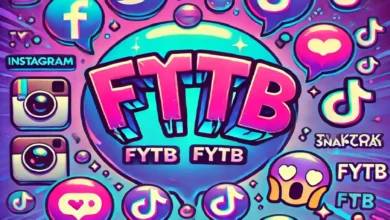
Audiobooks have emerged as the new ‘read’ recently as this medium has exploded in the last couple of years. From an obscure market to a mainstream phenomenon, recorded editions of books are simply how much people want to consume their content while technology and convenience continue unabated. So, what are some important trends that are driving this change and why is it that audiobooks are swiftly gaining popularity?
The Rise of Mobile and Streaming Technologies
Mobile technologies at large have been one of the most significant drivers for the rise of audiobooks. Smartphones, tablets, and other portable technology make it incredibly easy to access audiobooks anywhere. With platforms such as Audible, Google Play Books, and Apple Books, downloading and streaming audiobooks have become extremely user-friendly. The result is a push-button opportunity for many to blossom in the business of audiobook listening, amazingly increasing the market for audiobooks. With time constraints you can calculate the playback speed using an audiobook calculator and manage schedules to listen.
At the same time, it has been driving growth in the audiobook industry as well: a pay-per-month model is not much different from the subscription for music and movie streaming services such as Audible has been offering; hundreds of thousands of audiobooks are made available for a monthly fee that’s practically affordable. Thus, it makes listening to audiobooks cheaper and more accessible, making them increasingly popular.
Multitasking and Time Optimization
One of the most appealing strengths of books in audio versions is that they can squeeze into the nooks of one’s busy life. Unlike classical reading, in which a person has to sit and concentrate, audiobooks allow listeners to multitask. Whether in the car while driving, through household chores, or even at the gym while working out, it is then possible to consume this content during otherwise “dead” time. This versatility has attracted those who may not have time to sit down with a book but still need to indulge in literature or know more.
The busier people are, the more their reliance on effective use of time dictates what they like to consume. Hearing audiobooks is a painless way to make optimum use of time by “reading” while doing something else.
Experiential Storytelling as a Change
Audiobooks are utterly an immersive experience, far more than simply reading words on the page-thanks to skilled narrators with different voices, tones, and accents that give life to characters. Some cases, especially where a celebrity narrator or authors read their work aloud, include authenticity and an emotion of performance that complements the actual story.
This trend toward experiential storytelling means greater production values for Audio editions: many publishers now plough money into full-cast recordings, music, and sound effects to make it a richer, more cinematic listening experience. A trend such as this has further moved recorded books beyond their traditional role as a secondary format, making many readers turn to audiobooks as a prime, primary option.
Higher Genre and Content Diversity
While increasing demand for narrated books has sparked growth in all genres and topics, a reality faced today is that non-fiction related to literature the popular novel has always dominated. Industrywide, self-help and business books along with educational content and podcasts comprise an otherwise large and varied selection of works not necessarily fiction-related.
This extension into new genres has attracted the attention of more listeners with diverse interests, thus expanding the market for audiobooks even further. Audible books have proved particularly useful for some types of non-fiction books. There are memoirs where the actual author narrates his own story and gives more personal depth and connection to the book.
Universal Reach and Democratization of Content
The rising market share is not confined to one age group or geography. Availability through digital sites has allowed books to reach audiences from around the world; boundaries that were created in the past, such as language, inability to read, and unavailability, no longer pose a problem. Several platforms now also offer audiobooks in more than one language, which advances the cause of greater accessibility.
But there is also the democratization of content with audio books. Independent authors can self-publish in tandem with traditional formats, so they can go to audiences they may never have gone to in traditional ways. This sets the trend toward increasing diversity in voices and stories in the format that has proven so popular.
Learning and growth through audiobooks
Another pattern on the rise is that of digital books as an enabling material for learning and self-improvement. Today, these audiobooks give a useful way of absorbing information about whatever it is you wish to learn, ranging from language to studies at whatever academic level. Many people discover that subjects are much more understandable and interesting when listened to by an expert. So, for example, one finds an explosion in educational audiobooks and the growing use of audiobooks in professional learning and education platforms.
Final Take
In a world where time is money, and technology has dictated how we associate with content, one nugget of convenience, accessibility, and the immersive story has set a substantial place in the literary world: audiobooks. Catalyzed by new modes of experience in telling, an essential shift is underway regarding how people consume books. Telling by listening has been an alternative for a long time; now it’s gradually replacing reading also.
As we move ahead, I can assure you that digital books are going to be the most popular of the future boon to the way of thinking as regards reading and learning. Listening is indeed new; and going by these past few years, the future of the audiobook seems brighter than ever. Read more about interesting topics on our blog.





